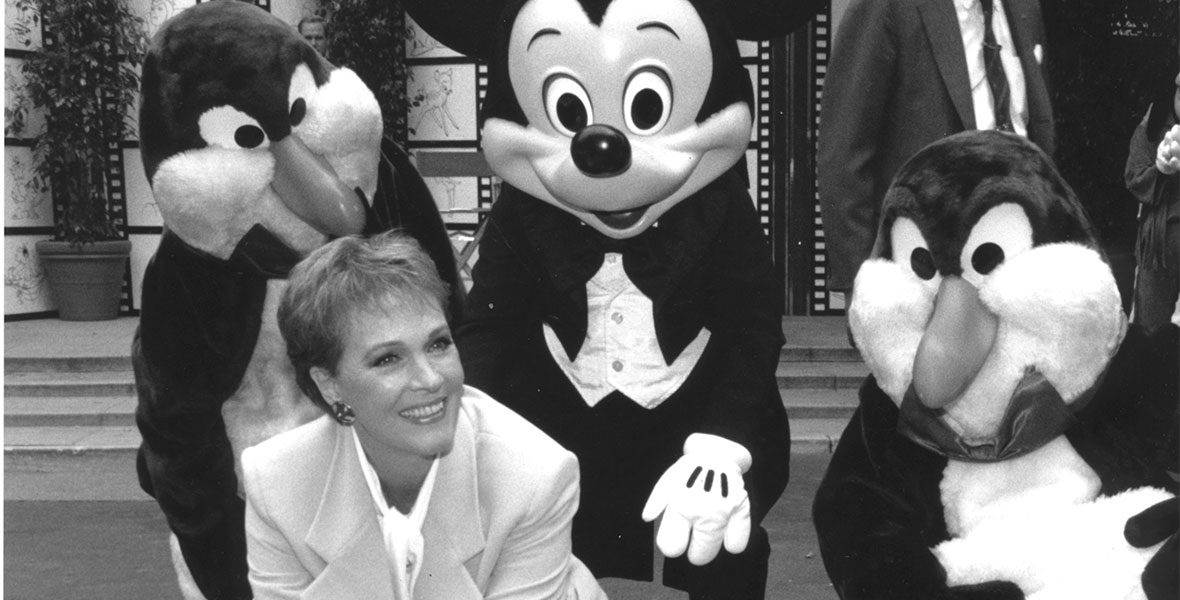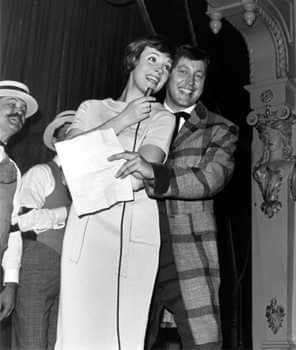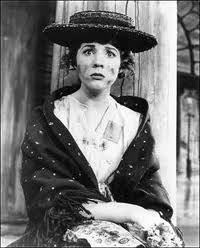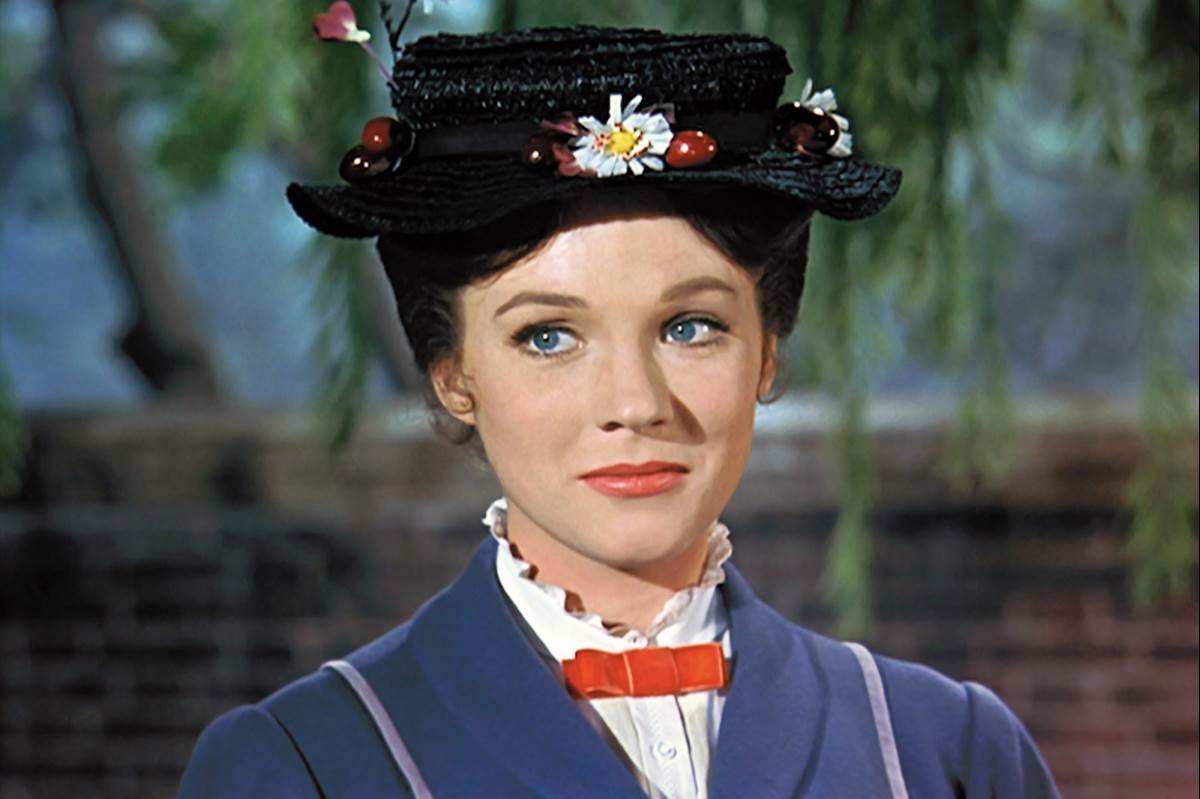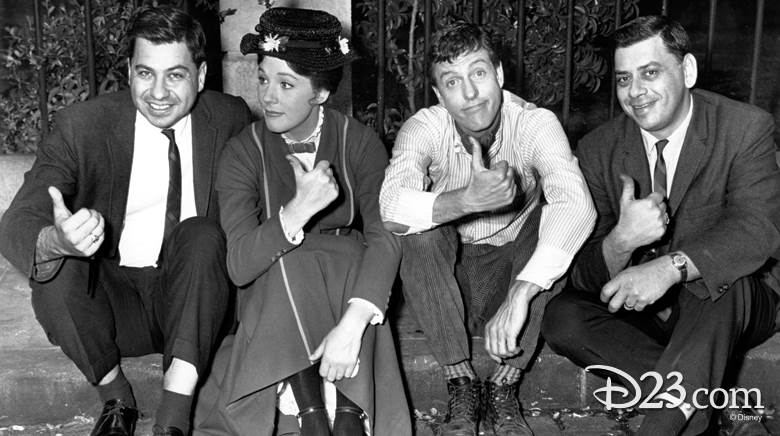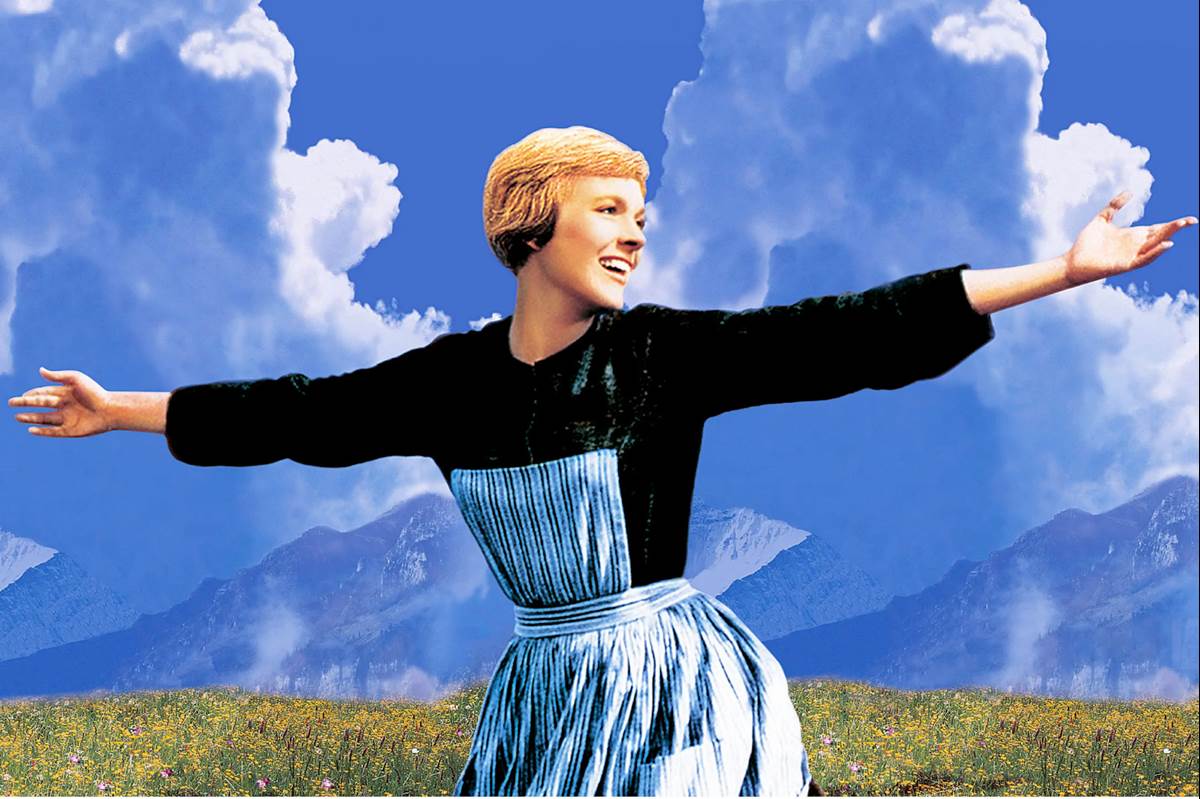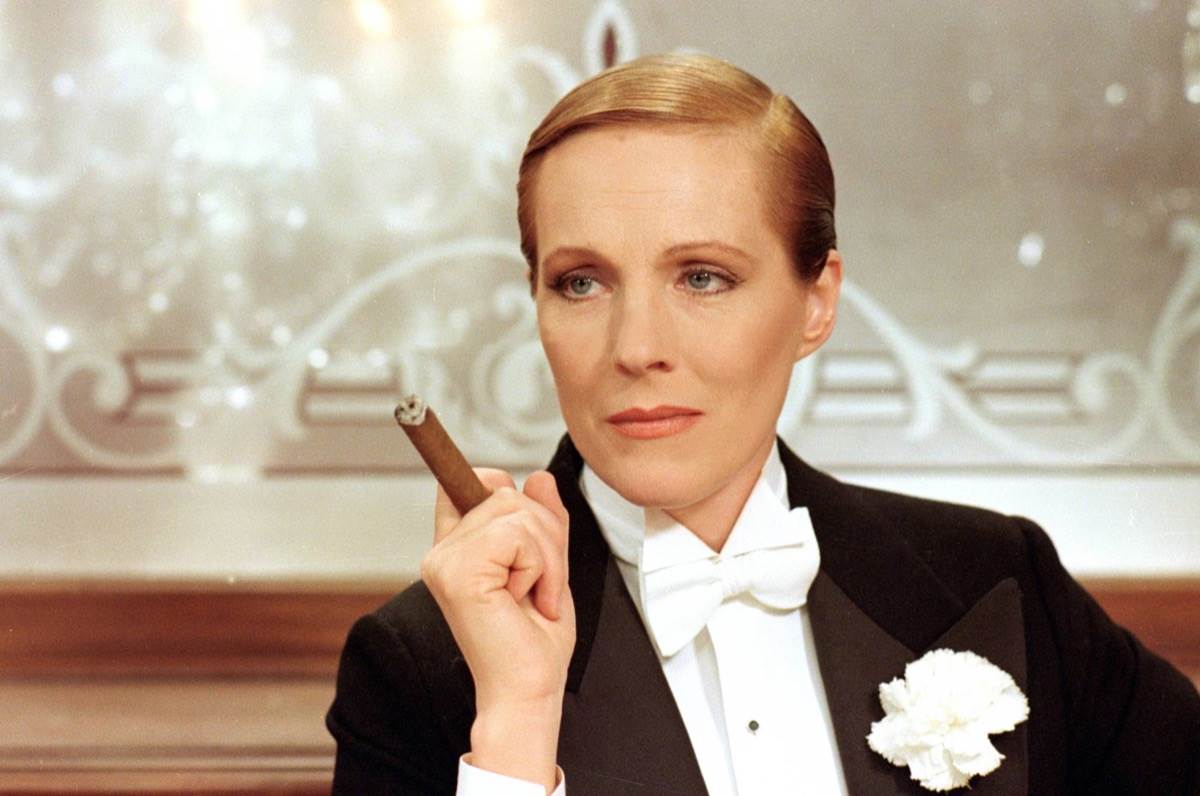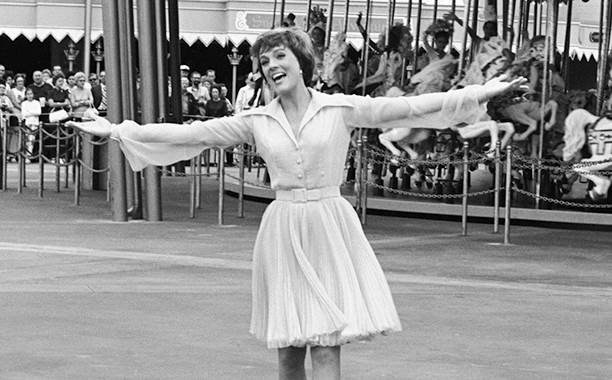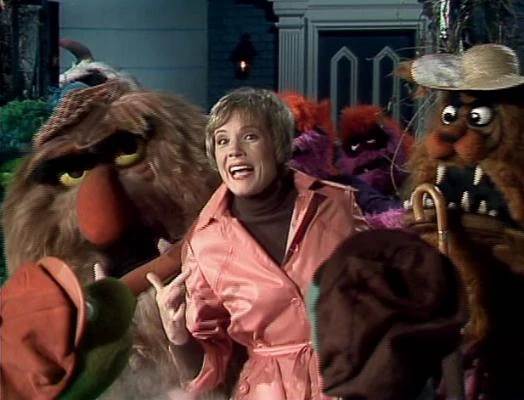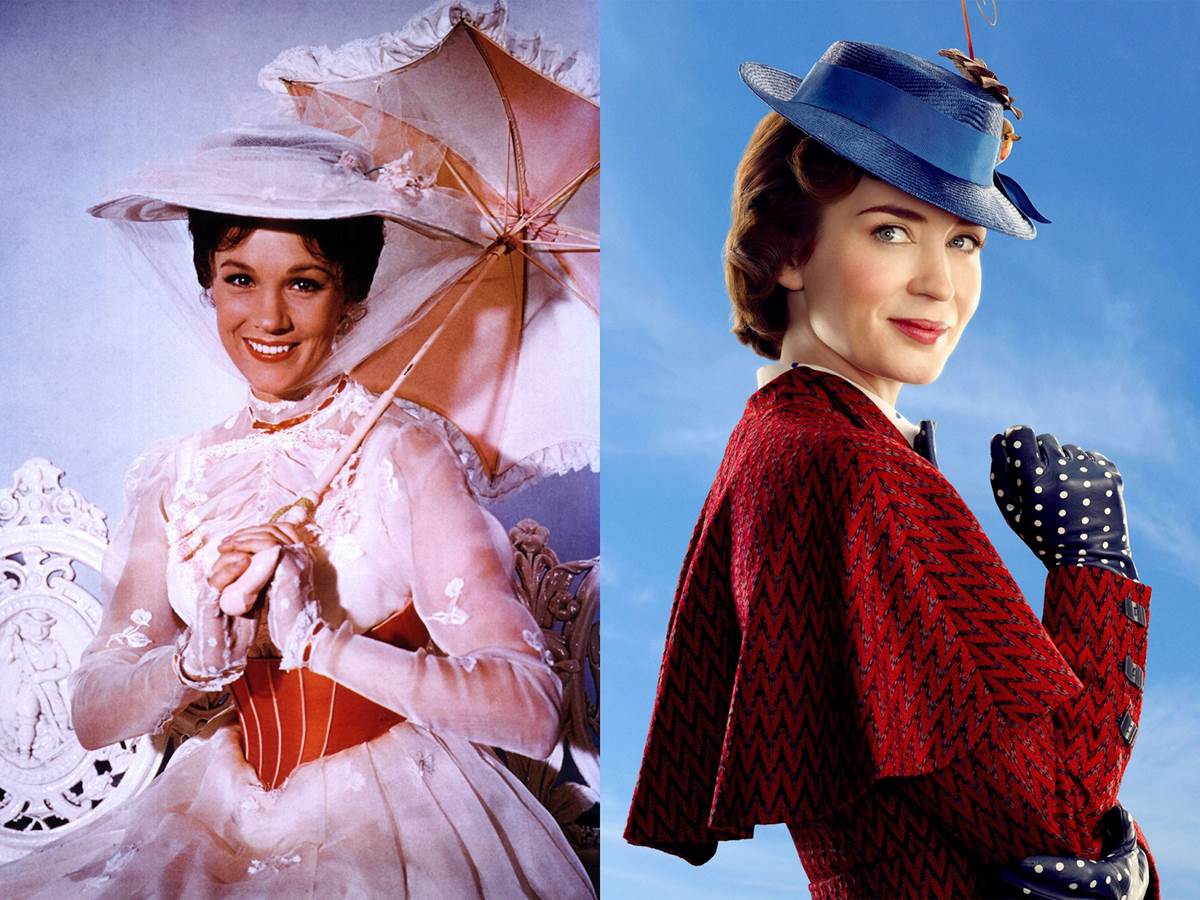Julie Andrews has shone with an enduring light and purity for well over seven decades. She’s done it on the stage, on the big screen, on the small screen, and with the pen – delighting audiences all around the world in the process. If ever there was someone deserving of being named a Disney Legend, it’s Julie Andrews. Let’s take a blissful trip through the life and career of Julie Andrews, in this edition of Disney Legends Spotlight.
A Child of World War II
Julie Andrews was born Julia Elizabeth Wells on October 1, 1935 in Walton-on-Thames, Surrey, England. At the tiny age of four years old, Andrews’ world was quickly changing, when World War II set in around Europe. Andrews’ parents went their separate ways during the war, and soon divorced.
Both of Andrews’ parents aided in the war cause. Her father assisted with evacuating children to Surrey during the German Blitz, while her mother joined her husband (Ted Andrews – Julie’s stepfather) in entertaining the troops through the Entertainments National Service Association (ENSA). This association would serve as one of Andrews’ earliest experiences in entertainment.
Andrews had lived with her father at the outset of the war, but in 1940 her father sent her to live with her mother and stepfather, who, as entertainers, were better positioned to nurture her artistic talents. It was here in this family that she adopted the name Julie Andrews.
The Andrews family initially lived in a poor area of London, but gradually they moved up in class as the career roles of Julie’s mother and stepfather improved. Andrews' stepfather sponsored lessons for her – first at an independent arts educational school in London, then followed by individual lessons with concert soprano and voice instructor Madame Lilian Stiles-Allen. Andrews described her voice instructor as having “an enormous influence on me", even going so far as to acknowledge her as a “third mother.”
Making a Splash
In 1945, when Andrews was ten years old, she began performing on stage with her parents. Her appearances were often spontaneous, and she was rarely acknowledged in the performance bills. Her first big career breakthrough came in 1947, at the age of 12, when she made her professional solo debut at the London Hippodrome. In her performance, Andrews sang the difficult aria "Je suis Titania" as part of the musical revue called Starlight Roof.
Andrews made an interesting Disney connection while performing in Starlight Roof. As she once recalled: "There was this wonderful American person and comedian, Wally Boag, who made balloon animals. He would say, 'Is there any little girl or boy in the audience who would like one of these?' And I would rush up onstage and say, 'I'd like one, please.' And then he would chat to me and I'd tell him I sang. … I was fortunate in that I absolutely stopped the show cold. I mean, the audience went crazy." Boag – the balloon man – would go on to enjoy a long and storied career with Disney – best remembered as the long-time host of Disneyland’s Golden Horseshoe Revue. Andrews and Boag later reunited in 1963 to recreate their charming scene from Starlight Roof.
Andrews’ career started to pick up steam, and in 1948 she became the youngest solo performer ever to be seen in a Royal Variety Performance before King George VI and Queen Elizabeth at the London Palladium.
Over the next six years, Andrews performed mainly television work, with a few stage roles sprinkled in.
Hitting the Big Time
On September 30, 1954, the day before her 19th birthday, Andrews made her Broadway debut as Polly Browne in the London musical The Boy Friend. The comic pastiche of 1920s musicals was a hit with audiences, and Andrews received high praise from critics, calling her the stand-out of the show.
Andrews’ performance in The Boy Friend caught the attention of the producers of another musical – My Fair Lady. In March 1956, My Fair Lady opened on Broadway, with Andrews in the starring role of Eliza Doolittle. The play was a giant success with both audiences and critics, and landed Andrews another starring role, as Cinderella in a 1957 Rodgers and Hammerstein television musical of the classic princess tale. The CBS broadcast was enjoyed by an estimated 107 million viewers – a sensational number.
With several big theater performances under her belt and a taste of success on the small screen, Andrews began making the television circuit. Between 1956 and 1962, she appeared with many big Hollywood names such as Ed Sullivan, Dinah Shore, Jack Benny, Garry Moore, and Carol Burnette.
In 1960, Andrews returned to the stage, in the period musical Camelot. The story of the legend of King Arthur featured Andrews as Queen Guinevere, starring alongside Richard Burton as King Arthur. While the play was met with mixed reviews, Andrews’ performance was received favorably.
While Andrews was working on Camelot, her previous stage hit My Fair Lady was being adapted for film in 1962 by Warner Brothers Studios. Andrews had hoped to make her first film appearance by reprising her role as Eliza Doolittle. However, Warner Brothers studio head Jack Warner decided Andrews was not popular enough to headline his film, and he offered the role to established film actress Audrey Hepburn (who needed most of her singing portions dubbed by professional singer Marni Nixon). While this rejection was disappointing to Andrews at the time, it proved to be a blessing in disguise, indirectly leading to what many consider to be the most significant role in her career.
A Spoonful of Sugar
Julie Andrews’ role as Queen Guenevere in Camelot made a huge impression on Walt Disney. The entertainment giant had just the right role in mind for her talent and whimsy – that of a magical nanny in his upcoming production Mary Poppins. Walt had fought for the rights to the story for over twenty years, and knew exactly what he wanted for the look and feel of his film. When Walt approached Andrews to offer her the role, she initially declined, as she was pregnant with her first child. Disney insisted, telling her "We'll wait for you." Walt waited well over a year for Andrews, and filming began in mid-1963, about six months after the birth of her daughter Emma.
Image: Disney
For her portrayal of the magically eccentric nanny, Andrews relied largely on instinct, conceptualizing her background, giving her a "particular walk" and a turned-out stance to suit her ladylike sensibility. Andrews referred to the production of Mary Poppins as "unrelenting" due to physical exertion and the need to incorporate many technical details. However, the challenge proved fruitful for her, and she has stated that she "could not have asked" for a better introduction to film.
At long last, Mary Poppins was released in August 1964. It became the biggest box-office film in Disney history to that point – largely due to the performance of Andrews, the charisma of costar and fellow Disney Legend Dick Van Dyke, and the showstopping music of the legendary composers, the Sherman Brothers. The film was nominated for thirteen Academy Awards and won five, including Best Actress for Andrews’ performance. In addition to her Academy Award, Andrews also won a Golden Globe Award for Best Actress – Motion Picture Comedy or Musical, while she and her co-stars won the 1965 Grammy Award for Best Album for Children.
Image: Disney
During her Academy Awards acceptance speech, Andrews cheekily thanked Jack Warner of Warner Brothers for passing her over for the role of Eliza Doolittle in My Fair Lady, giving her the opportunity to soar as Mary Poppins. As they often say, when one door closes, another opens…
The Hills Are Alive
In 1965 – hot on the heels of Mary Poppins – Andrews put on her nanny hat again to star as governess Maria von Trapp in The Sound of Music. Andrews had another hit on her hands as the film was the highest-grossing film of the year. As the name suggests, music was a huge part of the film, which suited Andrews’ talents perfectly. The Sound of Music takes place in World War II-era Austria, and Andrews wrote that her senses were "suffused" with Austria, saying that the music "always lives in her soul." For her role in the film, Andrews won her second Golden Globe Award for Best Actress – Motion Picture Comedy or Musical, and she was nominated a second time for the Academy Award for Best Actress.
Image: Everett Collection
While Mary Poppins and The Sound of Music are Julie Andrews’ biggest film roles, the iconic entertainer has many other memorable moments on the big screen. Andrews continued to burn brightly in Hawaii (1966) and Thoroughly Modern Millie (1967).
After spending much of the next fifteen years in a mix of film and television, Andrews scored another Golden Globe award and an Academy Award nomination for her dual role as Count Victor Grezhinski and Victoria Grant in 1982’s Victor/Victoria. Andrews reprised her famous dual role on Broadway in 1995 – her first appearance in a Broadway show in 35 years. Her performance garnered her a nomination for a Tony award. However, the selfless Andrews declined the nomination, feeling the production was deserving of more recognition than just her singular performance. Andrews stated at the time "I have searched my conscience and my heart and I am afraid I cannot accept this nomination. I prefer to stand with the egregiously overlooked cast and crew." What a class act.
Image: MGM
Vocal Surgery
In 1997, toward the end of the Broadway run of Victor/Victoria, Julie Andrews was forced to step out of the role she excelled at, having developed a hoarseness in her voice that made it difficult for her to perform to her high standards. She underwent surgery, reportedly to remove non-cancerous nodules from her throat. The surgery went poorly and left Andrews with a significantly limited vocal range, causing her to retreat from singing for several years. Andrews went on to doubt the very diagnosis that prompted her surgery in the first place, stating in 2010 on The Oprah Winfrey Show that her hoarseness was due to "a certain kind of muscular striation [that] happens on the vocal cords" which likely resulted from the strain of performing consistently in Victor/Victoria. She added "I didn't have cancer, I didn't have nodules, I didn't have anything." A malpractice suit on the matter was settled out of court for an undisclosed amount, but the damage was done. Andrews’ four-octave singing voice was reduced to a fragile alto, severely limiting her ability to sing.
Nonetheless, Andrews has persisted despite her vocal limitations, continuing to make significant contributions to film, television, the stage, and beyond. Let’s look at her most notable Disney connections.
Disney’s Nanny Queen
Mary Poppins may be what makes Julie Andrews stand out for Disney fans, but over the years, she has made many other contributions to the company.
When Walt Disney World opened in 1971, Andrews appeared as a guest on the resort’s grand opening special.
Image: Disney
In 1972–73, Andrews starred in her own television variety series, The Julie Andrews Hour, on the ABC network (which would later become part of the Disney family). The show won seven Emmy Awards but was unfortunately canceled after one season.
Between 1973 and 1975, Andrews continued her association with ABC by headlining five variety specials for the network.
She also guest-starred on The Muppet Show in 1977, and the following year, she appeared again with the Muppets on a CBS television variety special.
Image: Disney
Four years after her vocal surgery, Andrews acted in her first Disney film since Mary Poppins, starring in 2001’s The Princess Diaries as Queen Clarisse Marie Renaldi. She reprised her role as Queen in the 2004 sequel, The Princess Diaries 2: Royal Engagement.
In 2003, Andrews returned to her film nanny roots, starring in a pair of television films based on author Kay Thompson’s “Eloise” books. Eloise at the Plaza and Eloise at Christmastime both premiered in 2003. The latter brought Andrews an Emmy nomination for Outstanding Supporting Actress in a Miniseries or a Movie.
From 2005 to 2006, Andrews served as the Official Ambassador for Disneyland's 50th-anniversary celebration, the "Happiest Homecoming on Earth." In this ambassadorial role, Andrews traveled to promote the celebration, recorded narration, and appeared at several events in Disneyland. As part of the 18-month celebration, Andrews also hosted and narrated a special fireworks show called Remember… Dreams Come True.
You may hear an unmistakable voice throughout Disney’s 2007 film Enchanted. This live-action musical comedy, which both parodies and pays homage to classic Disney Princess films, is exquisitely narrated by Julie Andrews.
Not Quite
Almost as interesting as some of Julie Andrews’ Disney roles are a couple roles she did not perform.
Andrews was initially offered the role of the English witch Eglantine Price in Disney's 1971 film Bedknobs and Broomsticks. When considering the offer by Disney to perform the role, Andrews graciously declined because she felt the role was too similar to that of Mary Poppins. Shortly after, she reconsidered her decision and contacted the film’s producer Bill Walsh. But by then, the role had been offered to, and accepted by, fellow Disney Legend Angela Lansbury.
Of course, when Mary Poppins returned to the big screen in 2018’s appropriately named Mary Poppins Returns, many fans of the original wanted Andrews to reprise her role as the legendary magical nanny (or at least appear in the film). Director Rob Marshall approached Andrews, but she politely declined. As Marshall recounted in an interview with Entertainment Weekly "Julie was incredibly gracious, and we talked about it in a very general way but she made it clear right up front. She said, ‘This is Emily’s show, and I really want it to be Emily’s show. I don’t want it to be, “Oh, here comes that Mary Poppins.” I don’t want that. I really want her to take this and run with it, because she will be brilliant.’” Her Mary Poppins costar Dick Van Dyke did find a way into the sequel film, reprising his cheekily hidden role as the bank’s director, Mr. Dawes, Sr.
Images: Disney
Behind the Camera
In recent years, Julie Andrews has quietly made several notable voice contributions to film and television outside of Disney projects.
In 2004, Andrews voiced Queen Lillian in the animated blockbuster film Shrek 2, reprising the role for its sequels, Shrek the Third (2007) and Shrek Forever After (2010).
In another turn of animation, Andrews voiced the role of Marlena Gru – Gru’s mother – in the Despicable Me / Minions franchise, appearing in six different films.
Beginning in December 2020, Andrews has lent her voice talents to the Netflix period drama series Bridgerton, as the voice of Lady Whistledown – author of a scandalous society newsletter.
Books
It is impossible to do justice to the life and career of Julie Andrews in a simple article, Thankfully, she has written two memoirs – Home: A Memoir of My Early Years, and Home Work: A Memoir of My Hollywood Years. They are the source of much of the content in this article, told by Andrews herself.
In addition to her memoirs, Andrews has written or contributed to over twenty other works, including poems, songs, and children's books. Many of these works have been created with her daughter Emma Walton Hamilton.
Supercalifragilisticexpialidocious
To say Julie Andrews has enjoyed a decorated career would be a massive understatement. In addition to her individual performance awards, Andrews has been honored by countless organizations.
One of the earliest achievement awards given to Andrews was her star on the Hollywood Walk of Fame in 1979.
She was named a Disney Legend in 1991.
In 2000, Andrews was made a Dame Commander of the Order of the British Empire (DBE) for services to the performing arts and received the award from Queen Elizabeth II at Buckingham Palace.
Andrews was honored at the Kennedy Center in 2001.
In January 2007, Andrews was honored with the Lifetime Achievement Award at the Screen Actors Guild (SAG) awards.
Andrews received a Grammy Lifetime Achievement Award in February 2021.
Recently, in 2022, Andrews received a Life Achievement Award from the American Film Institute (AFI).
Any one of those honors could be considered the achievement of a lifetime, but Julie Andrews transcends the traditional boundaries of talent, and she has been deservedly recognized for her accomplishments.
—
Thank you friends for joining me on this Jolly Holiday with Julie Andrews. Do you have a favorite Julie Andrews role, song, or moment? Offer a comment or share this article with a friend by reaching out on social at:
Check out more Disney Legends in our spotlight collection.
Sources:
Disney D23 Legend Page for Julie Andrews
Home: A Memoir of My Early Years, Julie Andrews, Hyperion, 2008
Home Work: A Memoir of My Hollywood Years, Julie Andrews, Hachette, 2019
Skywalking: The Life and Films of George Lucas, Dale Pollock, Harmony Books, 1983,

